 W
WScott Raymond Adams is the artist and creator of the Dilbert comic strip, and the author of several nonfiction works of satire, commentary, and business. His Dilbert series came to national prominence through the downsizing period in 1990s America and was then distributed worldwide. Adams worked in various roles at big businesses before he became a full-time cartoonist in 1995. He writes in a satirical, often sarcastic way about the social and psychological landscape of white-collar workers in modern business corporations.
 W
WWilliam J. C. Amend III is an American cartoonist. He is known for his comic strip FoxTrot.
 W
WAlfred James Andriola was an American cartoonist best known for the comic strip Kerry Drake, for which he won a Reuben Award in 1970. His work sometimes appeared under the pseudonym Alfred James.
 W
WDaniel Edward Antonucci is a Canadian animator, director, producer, and writer. Antonucci is known for creating the Cartoon Network animated comedy series Ed, Edd n Eddy. He also created Lupo the Butcher, Cartoon Sushi, and The Brothers Grunt.
 W
WSergio Aragonés Domenech is a Spanish/Mexican cartoonist and writer best known for his contributions to Mad magazine and creating the comic book Groo the Wanderer.
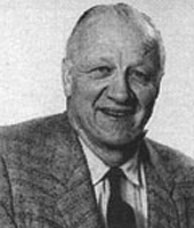 W
WWalter Berndt was a cartoonist known for his comic strip, Smitty, which he drew for 50 years.
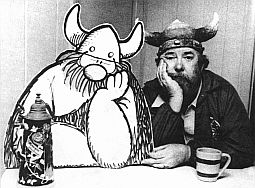 W
WDik Browne, born Richard Arthur Allan Browne in New York City, was an American cartoonist, best known for writing and drawing Hägar the Horrible and Hi and Lois.
 W
WErnest Paul "Ernie" Bushmiller, Jr. was an American cartoonist, best known for creating the daily comic strip Nancy, which premiered in 1938 and features the title character who has remained in print for over 85 years. His work is noted for its simple graphic style. In 1976, he received the Reuben Award from the National Cartoonists Society for his work on Nancy.
 W
WMilton Arthur Paul "Milt" Caniff was an American cartoonist famous for the Terry and the Pirates and Steve Canyon comic strips.
 W
WAlfred Gerald Caplin, better known as Al Capp, was an American cartoonist and humorist best known for the satirical comic strip Li'l Abner, which he created in 1934 and continued writing and drawing until 1977. He also wrote the comic strips Abbie an' Slats and Long Sam (1954). He won the National Cartoonists Society's Reuben Award in 1947 for Cartoonist of the Year, and their 1979 Elzie Segar Award, posthumously for his "unique and outstanding contribution to the profession of cartooning". Comic strips dealt with northern urban experiences until the year Capp introduced "Li'l Abner", the first strip based in the South. Although Capp was from Connecticut, he spent 43 years teaching the world about Dogpatch, reaching an estimated 60 million readers in more than 900 American newspapers and 100 foreign papers in 28 countries. M. Thomas Inge says Capp made a large personal fortune through the strip and "had a profound influence on the way the world viewed the American South".
 W
WRoyston Campbell Crane, who signed his work Roy Crane, was an American cartoonist who created the comic strip characters Wash Tubbs, Captain Easy and Buz Sawyer. He pioneered the adventure comic strip, establishing the conventions and artistic approach of that genre. Comics historian R. C. Harvey wrote, "Many of those who drew the earliest adventure strips were inspired and influenced by his work."
 W
WJohn Burton Davis Jr. was an American cartoonist and illustrator, known for his advertising art, magazine covers, film posters, record album art and numerous comic book stories. He was one of the founding cartoonists for Mad in 1952. His cartoon characters are characterized by extremely distorted anatomy, including big heads, skinny legs and large feet.
 W
WJames Robert Davis is an American cartoonist, best known as the creator of the comic strips Garfield and U.S. Acres. Published since 1978, Garfield is one of the world's most widely syndicated comic strips. Davis's other comics work includes Tumbleweeds, Gnorm Gnat and Mr. Potato Head.
 W
WMorris "Mort" Drucker was an American caricaturist and comics artist best known as a contributor for over five decades in Mad, where he specialized in satires on the leading feature films and television series.
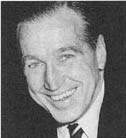 W
WBob Dunn was an American cartoonist, entertainer and gagwriter who drew several comic strips. In addition to his own strips, Dunn was known for his work on Jimmy Hatlo's Little Iodine and They'll Do It Every Time.
 W
WWilliam Erwin Eisner was an American cartoonist, writer, and entrepreneur. He was one of the earliest cartoonists to work in the American comic book industry, and his series The Spirit (1940–1952) was noted for its experiments in content and form. In 1978, he popularized the term "graphic novel" with the publication of his book A Contract with God. He was an early contributor to formal comics studies with his book Comics and Sequential Art (1985). The Eisner Award was named in his honor, and is given to recognize achievements each year in the comics medium; he was one of the three inaugural inductees to the Will Eisner Comic Book Hall of Fame.
 W
WHarold Rudolf Foster was a Canadian-American comic strip artist and writer best known as the creator of the comic strip Prince Valiant. His drawing style is noted for its high level of draftsmanship and attention to detail.
 W
WReuben Garrett Lucius Goldberg, known best as Rube Goldberg, was an American cartoonist, sculptor, author, engineer, and inventor.
 W
WMatthew Abram Groening is an American cartoonist, writer, producer, and animator. He is the creator of the comic strip Life in Hell (1977–2012) and the television series The Simpsons (1989–present), Futurama, and Disenchantment (2018–present). The Simpsons is the longest-running U.S. primetime-television series in history and the longest-running U.S. animated series and sitcom.
 W
WCathy Lee Guisewite is an American cartoonist who created the comic strip Cathy, which had a 34-year run. The strip focused on a career woman facing the issues and challenges of eating, work, relationships, and having a mother—or as the character put it in one strip, "the four basic guilt groups."
 W
WJohn Lewis Hart was an American cartoonist noted as the creator of the comic strips B.C. and The Wizard of Id. Brant Parker co-produced and illustrated The Wizard of Id. Hart was recognized with several awards, including the Swedish Adamson Award and five from the National Cartoonists Society. In his later years, he was criticized for incorporating Christian themes and messages into his strips. Hart was referred to as "the most widely read Christian of our time," over C. S. Lewis, Frank E. Peretti, and Billy Graham, by Chuck Colson in a Breakpoint column.
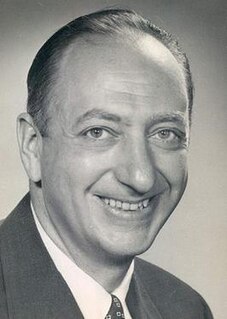 W
WHerbert Lawrence Block, commonly known as Herblock, was an American editorial cartoonist and author best known for his commentaries on national domestic and foreign policy.
 W
WAllan Jaffee is an American cartoonist. He is notable for his work in the satirical magazine Mad, including his trademark feature, the Mad Fold-in. Jaffee was a regular contributor to the magazine for 65 years and is its longest-running contributor. In a 2010 interview, Jaffee said, "Serious people my age are dead."
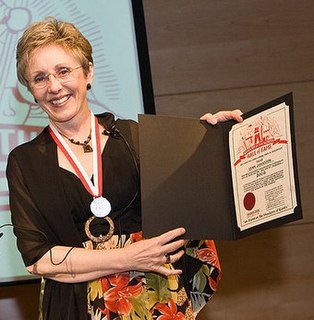 W
WLynn Johnston, is a Canadian cartoonist, known for her newspaper comic strip For Better or For Worse. She was the first woman and first Canadian to win the National Cartoonist Society's Reuben Award.
 W
WWilliam Aloysius Keane, better known as Bil Keane, was an American cartoonist most notable for his work on the newspaper comic The Family Circus. It began in 1960 and continues in syndication, drawn by his son Jeff Keane.
 W
WWalter Crawford Kelly, Jr., commonly known as Walt Kelly, was an American animator and cartoonist, best known for the comic strip Pogo. He began his animation career in 1936 at Walt Disney Studios, contributing to Pinocchio, Fantasia, and Dumbo. In 1941, at the age of 28, Kelly transferred to work at Dell Comics, where he created Pogo, which eventually became his platform for political and philosophical commentary.
 W
WHenry King Ketcham was an American cartoonist who created the Dennis the Menace comic strip, writing and drawing it from 1951 to 1994, when he retired from drawing the daily cartoon and took up painting full-time in his home studio. In 1953, he received the Reuben Award for the strip, which continues today in the hands of other artists.
 W
WFrank Oscar King was an American cartoonist best known for his comic strip Gasoline Alley. In addition to innovations with color and page design, King introduced real-time continuity in comic strips by showing his characters aging over generations.
 W
WFred D. Lasswell was an American cartoonist best known for his decades of work on the comic strip Barney Google and Snuffy Smith.
 W
WMelvin Lazarus was an American cartoonist, best known as the creator of two comic strips, Miss Peach (1957–2002) and Momma (1970–2016). Additionally, he wrote two novels. For his comic strip Pauline McPeril, he used the pseudonym Fulton, which is also the name of a character in his first novel, The Boss Is Crazy, Too.
 W
WJeffrey Kenneth "Jeff" MacNelly was an American editorial cartoonist and the creator of the comic strip Shoe. After Shoe had been established in papers, MacNelly created the single-panel strip Pluggers.
 W
WWilliam Henry Mauldin was an American editorial cartoonist who won two Pulitzer Prizes for his work. He was most famous for his World War II cartoons depicting American soldiers, as represented by the archetypal characters Willie and Joe, two weary and bedraggled infantry troopers who stoically endure the difficulties and dangers of duty in the field. His cartoons were popular with soldiers throughout Europe, and with civilians in the United States as well. However, his second Pulitzer Prize was for a cartoon published in 1958, and possibly his best-known cartoon was after the Kennedy assassination.
 W
WPatrick McDonnell is a cartoonist, author, and playwright. He is the creator of the daily comic strip Mutts, syndicated since 1994. Prior to creating Mutts, he began a career as a prolific magazine illustrator, and would frequently include a dog in the backgrounds of his drawings.
 W
WWillard Mullin was an American sports cartoonist. He is most famous for his creation of the "Brooklyn Bum", the personification of the Brooklyn Dodgers baseball team, based on circus clown Emmett Kelly's "Weary Willie" hobo persona. He was widely published: he cartooned daily for Scripps-Howard's New York World-Telegram and Sun for decades and was often published in Scripps-Howard's twenty papers, as well as in the Sporting News.
 W
WBrant Julian Parker was an American cartoonist. He co-created and drew The Wizard of Id comic strip until passing the job on to his son, Jeff Parker, in 1997. Cartoonist Johnny Hart, his co-creator, continued writing the strip until his death on April 7, 2007. Parker himself died eight days later, on April 15.
 W
WMichael Bartley Peters, better known as Mike Peters, is an American Pulitzer Prize-winning editorial cartoonist and the creator of the comic strip Mother Goose and Grimm.
 W
WDaniel Charles Piraro is a painter, illustrator, and cartoonist best known for his syndicated cartoon panel Bizarro. Piraro's cartoons have been reprinted in 16 book collections. He has also written three books of prose.
 W
WAlexander Gillespie Raymond Jr. was an American cartoonist who was best known for creating the Flash Gordon comic strip for King Features Syndicate in 1934. The strip was subsequently adapted into many other media, from three Universal movie serials to a 1970s television series and a 1980 feature film.
 W
WArnold Roth is an American cartoonist and illustrator for advertisements, album covers, books, magazines, and newspapers. Novelist John Updike wrote, "All cartoonists are geniuses, but Arnold Roth is especially so."
 W
WCharles Monroe "Sparky" Schulz was an American cartoonist and creator of the comic strip Peanuts. He is widely regarded as one of the most influential cartoonists of all time, cited by cartoonists including Jim Davis, Bill Watterson, Matt Groening, Dav Pilkey and Stephan Pastis.
 W
WJerry Scott is an American cartoonist and writer. He is known for co-creating the comic strips Baby Blues and Zits. He is one of only four cartoonists to have multiple strips appearing in over 1,000 newspapers worldwide.
 W
WRonald William Fordham Searle, CBE, RDI was an English artist and satirical cartoonist, comics artist, sculptor, medal designer and illustrator. He is perhaps best remembered as the creator of St Trinian's School and for his collaboration with Geoffrey Willans on the Molesworth series.
 W
WOtto Soglow was an American cartoonist best known for his comic strip The Little King.
 W
WLeonard Starr was an American cartoonist, comic book artist, and advertising artist, best known for creating the newspaper comic strip On Stage and reviving Little Orphan Annie.
 W
WGarretson Beekman Trudeau is an American cartoonist, best known for creating the Doonesbury comic strip. Trudeau is also the creator and executive producer of the Amazon Studios political comedy series Alpha House.
 W
WAddison Morton Walker was an American comic strip writer, best known for creating the newspaper comic strips Beetle Bailey in 1950 and Hi and Lois in 1954. He signed Addison to some of his strips.
 W
WWilliam Boyd Watterson II is a retired American cartoonist and the author of the comic strip Calvin and Hobbes, which was syndicated from 1985 to 1995. Watterson stopped drawing Calvin and Hobbes at the end of 1995 with a short statement to newspaper editors and his readers that he felt he had achieved all he could in the medium. Watterson is known for his negative views on licensing and comic syndication, his efforts to expand and elevate the newspaper comic as an art-form, and his move back into private life after he stopped drawing Calvin and Hobbes. Watterson was born in Washington, D.C., and grew up in Chagrin Falls, Ohio. The suburban Midwestern United States setting of Ohio was part of the inspiration for Calvin and Hobbes.
 W
WMurat Bernard "Chic" Young was an American cartoonist who created the comic strip Blondie. His 1919 William McKinley High School Yearbook cites his nickname as Chicken, source of his familiar pen name and signature. According to King Features Syndicate, Young had a daily readership of 52 million. Stan Drake, who drew Blondie in the 1980s and 1990s, stated that Young "has to go down in history as one of the geniuses of the industry."